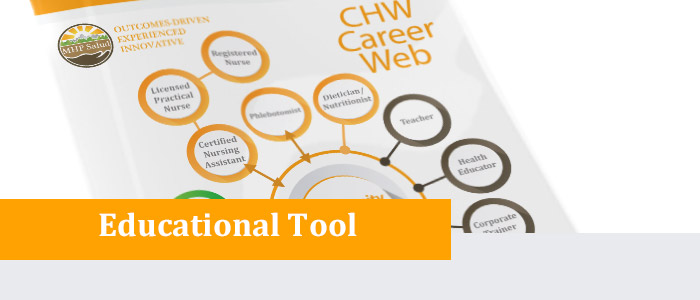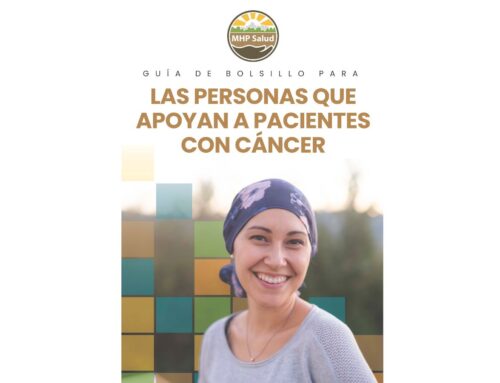Careers in Health, Education, and Social Work Spotlight
Published April 2021 | Back to all news and updates
Each month, we will highlight the journey of individuals’ professional development into roles within and outside of the CHW profession. The first story is about Emilia’s journey from CHW to Certified Nursing Assistant and the second about Vanessa’s journey from CHW to Registered Nurse. The third story features Dante, who also became a Registered Nurse, but unlike Emilia and Vanessa, he did not start out as a CHW. This story is included to illustrate how the CHW profession builds skillsets that are desirable across industries. It is also included to illustrate the key differences between the CHW profession and other careers in related fields.
Emilia’s Story: From CHW to Certified Nursing Assistant

Emilia worked as a CHW at a non-profit that focused on assisting individual health needs in the community. The program that she worked for specialized in maintaining health and wellness for the elderly. She enjoyed many aspects of her job, including providing social support, helping patients get around in their homes, and conducting home safety assessments. However, when she joined the health field, she originally wanted to be a nurse. She became a CHW because she felt connected to the older African American individuals in the community and wanted a job where she could help them. Additionally, her mother was a CHW and showed her how they connect and assist the community. The role provided her valuable experience, but it was time to pursue her original goal of becoming a nurse. She knew to become a registered nurse there would be a substantial investment to meet the education requirements. She figured to begin her path into the nursing profession she could start as a certified nursing assistant (CNA). The position required minimal schooling and provided professional experience. Ultimately, she decided to embark on the journey to becoming a CNA.
Emilia enrolled in a state-approved education program at a vocational school. The program was short, so she maintained her job as a CHW during its duration. After six weeks, she completed the program and received a certificate of completion. She then began to look into becoming certified in her home state. She took the exam through the state board of nursing and became certified. Once she completed schooling and became certified, she began looking for positions. She knew that working with the elderly was her passion and she wanted to maintain that in her new role. She ended up finding a position at a nursing home and began her career as a CNA.
Vanessa’s Story: From CHW to Registered Nurse

Vanessa was a CHW at a Federally Qualified Health Center (FQHC) for about two years. Her role as a CHW included duties like outreach, informal counseling, and helping doctors communicate with patients. She enjoyed this role but needed to find a role with higher compensation to support her growing family. The CHWs at the FQHC where she worked were very integrated into care teams and Vanessa interacted with many registered nurses (RNs). She knew that they made a higher wage and as an RN she could maintain the work she enjoyed with a scope of practice that allowed her to have clinical responsibilities like giving medications and conducting patient assessments. Before she made the decision, she wanted to chat with some of the RNs. They told her the process would require her to obtain an associate degree and certification by passing the National Council Licensure Examination (NCLEX-RN). She was worried about the time commitment required to go back to school but decided that in the long term it would be worth it. After the conversations with the RNs, Vanessa enrolled in a nursing degree program at a community college. She found the program to be challenging but felt her experience as a CHW helped her through the coursework. She completed the program in about three years.
During her time in school, she worked part-time as a CHW and reduced her spending to stay financially afloat and prepare for the student loan payments after graduation. After earning her associate degree in nursing, she signed up for the NCLEX-RN on the National Council of State Boards of Nursing website. She took the test twice and passed on the second try. Once she earned licensure, she began looking for positions as an RN. During her time in school, she had maintained her CHW position at the FQHC. A month after she became licensed an RN position opened up at the FQHC. She had good standing at the FQHC, and leadership knew she was looking to become an RN. They ended up offering her the position and she began a career as an RN.
Dante’s Story: From a Non-CHW Role to Registered Nurse

Dante was a waiter at a restaurant for many years. He had always known that he wanted to become a nurse because they were a big part of his mom’s recovery from cancer. However, after having a daughter and being a single parent he had to put his goal of being an RN on pause because he could not commit the time needed to attend school. Once his daughter was old enough to start school, he decided it was time to pursue his dream of becoming an RN. He did some online research and read that to become an RN one needed to earn a degree and become licensed. He knew it would be a time commitment, but his mother agreed to help watch his daughter. He was also concerned about working while in school. He could keep his serving job to earn money but wanted to earn some experience. He had a great relationship with the community and decided to work as a CHW at a health center. The role did not have the clinical work he was looking for but could expose him to the health field and he could work nontraditional hours.
Dante began the process of becoming an RN by enrolling in a bachelor’s program. He decided to get a bachelor’s rather than an associate’s because he heard it would provide more opportunities for upward mobility. He enjoyed the program but found the academic portion of school to be difficult. On the other hand, he loved the clinical courses that allowed him to work hands-on with patients and nurses. He ended up taking a semester off in the middle of the program because he started feeling burnt-out and wanted to spend time with his daughter. Overall, the program took him about five years to finish. Once he completed the program, he went to register for state licensure. He signed up for the NCLEX-RN and earned his licensure on his first attempt. He then began searching for a job as an RN. He searched for a couple of months, with a few failed interviews. Finally, he landed an entry-level position in a hospital’s intensive care unit and started a career as a nurse.
Note these stories are based on real-life scenarios but contain fictional characters.
Download the CHW Career Web Model Resource for free!

Our CHW Career Web Model resource demonstrates the numerous ways that an individual can find themselves becoming a CHW or how they may progress their career under various ‘career clusters’ like social work, clinical, or advocacy after being a CHW. The resource can be used as a tool by organizations that work with CHWs such as community-based organizations, CHW Associations, Federally Qualified Health Centers (FQHCs), Primary Care Associations (PCAs), and Area Health Educations Centers (AHECs) to help explain the different career trajectories those in the CHW workforce have.
Blog Topics
About MHP Salud

MHP Salud has over 35 years of experience implementing CHW programs and training organizations looking to start and/or strengthen their own CHW programs. Visit our CHW Training & Consulting Services page to learn more about how we can help.






